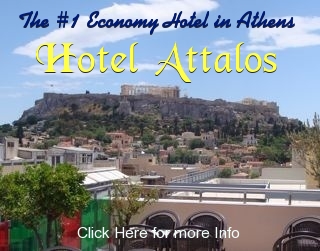
Peloponessos
Arkadia
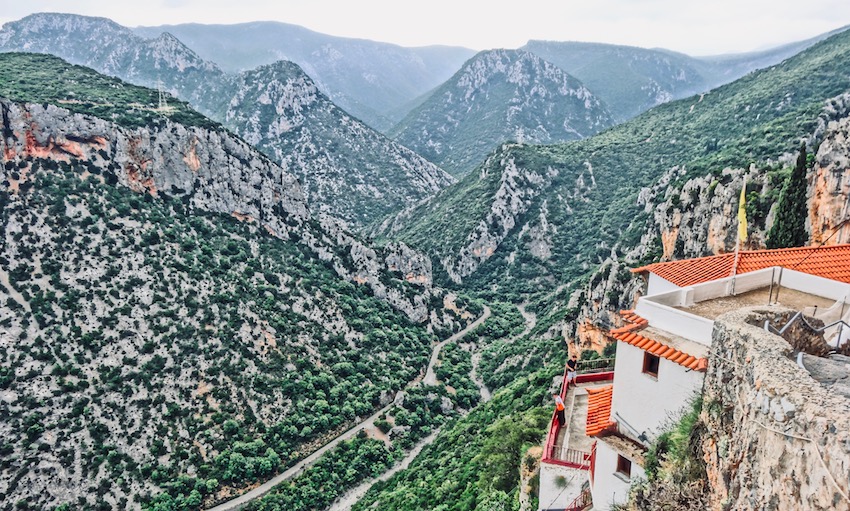
|
Arcadia is a mountainous land of rivers, streams, deep gorges, medieval castles, Byzantine churches and monasteries, traditional villages and ancient cities, for skiing in the wintertime and hiking all year long. It is also a land of beautiful beaches and clean seas. And for those who are fans of the book Holy Blood-Holy Grail this is where the grail came when it left the Holy Land. Arcadia is an area visited by only a few determined tourists who are rewarded by one of the finest coastlines in Greece. |
The Arkadia Coast |
|
|
| The coast of Arkadia begins just south of the town of Kiveri almost directly across the bay from the town of Nafplion to the east. The coast line is a mix of mountains that go right to the sea, coastal plains and deltas, and riverbeds that usually leads to beautiful isolated beaches. The color of the sea is different from the Cyclades, but no less awe inspiring and the further south you go the more beautiful it becomes. |
|
|
|
The large agricultural town of Leonidio is in a dramatic setting, at the end of a long gorge straddling the Dafnon riverbed, a few kilometers from where it finally meets the sea. Nearby are some of the nicest beaches in the Peloponessos. Leonidio is known for its unique eggplants which are grown in farms on the plain between the town and the sea. They are the light purple ones with white stripes that they call tsakones and every year in August, after the 15th they have their eggplant festival which attracts people from all over Greece and from other countries as well. Part of the festival is a competition among chefs for the best eggplant dish. The EU has even designated Leonidio as the Tsakonika Eggplant Capital of Europe for having the best tasting and sweetest eggplants. If you want to stay on the sea then this is one of the best areas to be in Arkadia. |
|
|
|
Leonidio's beach and coast area is called Paralia Plaka, a mix of pebbles and sand that stretches for miles, with a small fishing harbor that has several fish tavernas, and a handful of places to stay. You can find hotels, villas, holiday homes and rooms by using my Leonidio Hotel Search. There is also a campsite here called Semeli Camping just a short walk to the port and the beach. Leonidio is popular with rock climbers and hikers, most of them coming in the off-season, though they do come in the summer as well. Leonidio is considered the best place for rock climbing in Greece and the region is evolving to become one of the biggest climbing zones in Europe. The high quality of limestone leads the way for hundreds of fields and thousands of new routes. See Climbing in Leonidio |
|
|
|
To the south of Leonedio is the village of Poulithra also with a spectacular beach. There are a good number of hotels and other places to stay on the sea, such as the Byzantinon Hotel, in a traditional mansion, the Porto Sabatiki with pool and a beach or the economical Stathopoulos Apartments. There are a number of traditional restaurants on the beach and in the village. If you want to go somewhere that is un-touristy and more beautiful than the places the tourists are going then this is it. Search Poulithra Hotels |
|
|
|
The road between Leonidio and Kosmas is one of the most spectacular drives in Greece. You pass the Monastery of Panagia Elona, built in an enormous cave on the rock face of the Dafnon River Gorge, which rivals the monasteries of Meteora. The origin of the monastery date back to the 14th century when shepherds saw a strange light emanating from a nearly inaccessible area on the rock cliff. When the local people climbed up they discovered a candle illuminating an icon of the Virgin Mary and the Child Jesus. A small church was built on the spot. The monastery was burned and looted and the monks massacred after the failed revolution of 1770. The current church was built in 1809 and the monastery is now somewhat of a convent. Be sure to visit with the ladies from Leonideon who have set up shop in the parking lot where they sell traditional goods, including the best honey you will have ever tasted. (I recommend the carob honey). They also sell spatholatho which is a healing oil made from Saint John's Wort that was used since ancient times for healing sword wounds. Even if you don't normally fight with swords it comes in very handy for any kind of cut or abrasion. I also recommend their capers, volvous, olives, bee pollen, almonds and mountain herbs and teas. We always stop here and stock up on supplies on the way to and from my grandmother's village. |
|
|
|
As long as you are in the neighborhood and are interested in Monasteries you may as well visit the Monastery of Agios Nicholaos Sintza which you can reach by following the road out of Leonideion on the south bank of the river bed. It was built in 1622 into the rock cliff overlooking the river valley and the town. You can drive there on the paved road or if you walk from town it takes a bit more than an hour. In the summer there is an old woman, a nun, who is the caretaker and she will show you around. In the winter she lives in the valley and you can ask her for the key. In the monastery is a bone from a dragon that used to terrorize the pilgrims coming here until he was killed. |
|
|
|
If you continue up the coast on the east side of the nearly 2000 meter high Mount Parnon you will pass beautiful beaches in sandy coves, some with fish tavernas known only by the locals. Take the turn off to Livadi and follow the frighteningly narrow road to the bottom and you will be rewarded by one of the best family run psarotaverna you will ever eat in. It is called To Mouragio. You can continue on up the coast past small villages to the town of Tyros with its long beach and numerous restaurants and hotels that are usually full of Athenians in August and summer weekends but have plenty of availability the rest of the time. |
|
|
|
By the way if you find your Greek is failing you in some of the small villages in the area don't be too concerned. It's not you. This is the part of Greece where they still speak the Tsakonian language, the sole surviving dialect of the language of the ancient Dorians. The Tsakonian language is spoken from the town of Agios Andreas in Kynouria south to Leonidio and Tyros and inland as far as Kastanitsa and Sitaina. Yes people speak Greek in this area too but because of the old saying that if you don't use it you lose it, visitors are encouraged to ask locals to speak it. In Tyros the local schools teach Tsakonikan as a foreign language and there are some locally published books for children and a 12 volume adult course. For more about the Tsakonian Language see this conversation in Matt's Greece Travel Facebook Group. |
|
|
|
Try to stop at the natural spring in Lake Moustou, part of the Moustou Natural Wetlands a protected area which contains a large number of birds and other wildlife. According to John L. Tomkinson in his book Haunted Greece: Nymphs, Vampires and other Exotika the lake is... "Inhabited by a great monster which has never been seen but which has sometimes been heard booming over a great distance." At one period it made the sound three times a day and the local villagers were so afraid they went down to the lake with guns. Chances are you won't see the beast but if you have binoculars you can see the wildlife and then go to the beach town of Paralia Astros with its beautiful beach, medieval castle and Archaeological museum and a coast road and harbor dotted with fish tavernas and fast food joints a popular holiday destination for Peloponesians and Athenians. |
|
|
|
The holy grail of out of the way off the beaten path beaches is the long pebble beach of Fokianos. It means seal, as in the animal, and it is not hard to imagine seals living here, far from humans. In the off-season that is. This is one of the cleanest and most beautiful beaches in Greece, the long road to it being a discouragement to most travelers who have grown tired of the hairpin turns and the confusing narrow roads in the area, though a wide modern road now connects it to the town of Kyparissi in Lakonia. In the summer you will find locals and some Greek tourists here and even sun-beds and umbrellas courtesy of a couple tavernas/beach bars on the beach. The white pebbles make the sea a spectacular color and best of all there is no cell phone signal for those who want to stay out of touch for a day. No GPS either so you may want to learn how to read a map. The beach is pebbles and stones, not sand, and there are some sea urchins so for some people who spend more time walking and standing in the sea than swimming water shoes may be helpful. Oh yeah and there are those pesky yellow jackets whose favorite food is usually whatever you are eating. But despite the dangers Fokianos is worth the trip, though a lot easier if you are staying in Kyparissi than if you are coming from Arkadia. My cousin tells me a guy named Kostas in one of the restaurants has one of the best selection of vinyl or cds in Greece. |
Inland Villages and Towns |
|
|
|
The village of Kosmas has
mild summer weather, a beautiful square around the large church and a famous lion fountain. The area is known for its chestnuts in the fall and for the excellent meat restaurants which people travel great distances to eat at, especially in the winter when they have the fireplaces lit and the whole village smells like a psistaria (grill-house). Try the small traditional restaurant called O Elatos where two women and their
husbands crank out dishes of grilled paidakia(lamb chops), hirino
brizoles(pork chops), mouschari(steak), sikotaria (liver) and
other meat dishes. The specialties of the village are yida, a goat soup that is eaten in the winter, gkougkes,
which is a local thick pasta with cheese, and pitaroudia, the local horta
or spinach pie which is fried, grilled or sauteed instead of baked. They have an
excellent local rose wine, more tan than pink and almost like sherry, which we wanted
to get a bottle of to bring home but they were in short supply. (They did have
some at the Selinouta traditional products shop). |
 |
|
From Peter Katsambis.... "Platanaki is a small village near Agios Vassilios (2 km) in Southern Kynouria, Arkadia and 10kms from Paleochori. It is 980 metres above sea level in a beautiful location next to a fir forest on Mount Parnon. The area has been inhabited since antiquity and was called Glypia and was inhabited by Achaeans. Today the area between the village and Agios Vassilios is called Paleochora. The village has around 180 inhabitants, who during the winter months move to the village of Vlachioti in Laconia. They are engaged in agriculture, beekeeping and construction work. Platanaki is the homeland of the Makedonomacho Captain Foufa, whose statue sits proudly in the village square. The beautiful church Panagia Platanakiotissa of the village and its small square overlook the plateau of Glypia giving a wonderful view. Above is a nice square with beautiful fountains. A short distance away, on the road to St. Basil, is a medieval tower. The route to Kosmas ( About 20kms ) which passes through dense forests is simply beautiful. If you do intend on visiting this part of Arkadia on your next trip to Greece and plan on visiting Elona Monastery on your way to Leonidio, I highly recommend taking the time to visit not just Platanaki, but also the surrounding villages of Agios Vasilios and Paleochorion. If visiting Agios Vasilios make sure you have lunch at any of the 2 taverns there for the best psaronefri." |
|
|
|
Tripolis The capital of Arkadia is the town of Tripolis which was completely destroyed by Ibrahim Pasha in 1827 and rebuilt shortly after. As the capital of what was the Turkish Pashalik of the Peloponnesos, with a large Muslim and Jewish population, it was one of the first places the Greeks liberated in the Revolution of 1821. Located on a high plain surrounded by mountains in what is as close to being the geographical center of the Peloponnesos as you can get, Tripolis is an administrative, economic, transportation, and agricultural center with some small industry, an historical commercial center with cafes, restaurants, shops, museums, and very few tourists. Even so it makes a good base for exploring Arkadia and much of the Peloponnesos since the new major highways to Kalamata and Sparta pass right by it. Tripolis means three cities, though there is some discussion as to what these three cities were. The Archaeological Museum of Tripolis is in an impressive neo-classical building called the Evangelistria, designed by the architect Ernst Ziller and was formerly the Panarkadian Hospital. The museum contains the major finds from all around Arkadia from the Neolithic through the early Christian era. It is located at Spiliopoulou 2 close to Platia Kolokotronis. Visit the War Museum of Tripolis, a small museum that focuses on this important period of Greece's history. It is located just west of Platia Agiou Vassiliou, a central square of the town with cafes, restaurants and shops and is the crossroads of several pedestrian shopping streets. It is also the location of the impressive church of Agiou Vassiliou (Saint Basil), the main cathedral of the city. Being a non-touristy, typical Greek city, Tripolis is loaded with good restaurants from fast-food to fancy. Many of the nicer restaurants are located on Plateia Areos. One in particular is The Grand Chalet located in the shady tree lined area of the square with a whole array of traditional dishes served in a picturesque setting. Order the poikilia and the lamb fricasse. Piteros Klimataria at Kalavriton 11 is a popular restaurant that has been serving traditional homestyle Greek food for several generations. Walk another block and Sendoukaki at Kalavriton 30 is another family run local restaurant known not only for its delicious food, large portions, and low prices but also for the hospitality and friendliness of the owners. There are loads of restaurants in Tripolis and the fact that it is not a tourist town means that if the restaurant looks good then it probably is. In towns where the restaurants depend on local business it is usually hard to go wrong since the bad ones have been weeded out. Fopr something not exactly old school X2 at Dariotou 18 is a cozy little modern Greek traditional restaurant, which means it serves traditional Greek food with imagination as well as other non-Greek Mediterranean dishes, often by a trained chef. I might mention here that Tripolis is known for its delicious cherries and when you drive around the area during the season, which is late spring or early summer look for farm stands. |
|
There are several hotels in or close to the center of town, the best and most convenient being the 4-star Hotel Anaktorikon which is right where you want to be, and the Mainalon Resort located on the nearby Areos Square. Both are very nice hotels with high marks from reviewers. There are also several smaller hotels and apartments available which you can find through Matt's Tripolis Hotel Search. |
|
|
|
Agia Fotini of Mantinea One of the most interesting churches in Greece is Agia Fotini of Mantinea, close to the ancient battlefield and archaeological site a few miles north of Tripolis. It is a unique building, unlike any other church in Greece. In fact it is considered one of the strangest and most mysterious churches in the world and has been visited by architects, archaeologists and historians despite the fact that it was only built in 1973. Created by architect Costas Papatheodorou, an employee at the Greek Ministry of Culture, who was so humbled by the chore he was given that he quit his job and made the church his life's work. His creation was controversial as the church has elements of not just Orthodox Christianity but Mythology, folklore, Greek philosophy and a smorgasbord of styles in art and architecture alive with symbolism that make it like a story book that every time you read it you learn something new. It is not for everyone. Some conservative people are offended by it, describing it as having little to do with traditional Greek orthodox architecture. (It actually has a lot of these elements and many others). Others find it inspiring, some calling it the most impressive building in Greece after the Parthenon. But whatever kind of person you are it is worth a visit. Make sure you go inside. One way to look at it is to understand that Christianity did not just appear like magic on the earth when Jesus showed up. The church has been influenced by people and events, real and imagined, from before the appearance of Christ and after. Agia Fotini pays tribute to many of these influences with its architecture and its art. It is a very open minded church. Don't miss the Heron of Mantineia, a small temple on the church grounds built in honor of the fallen heroes of Greece. |
|
|
|
The church is across the street from the Archaeological Site of Mantinea which you should take the time to explore since it is right there and won't take long. Like many archaeological sites in Greece it has been pretty much demolished and picked over with few stones standing more than a couple feet high but there are the ruins of an ancient theater, the agora and a couple temples and city gates. During the Peloponnesian war Mantinea was allied with the Athenians against the Spartans. In the battle of Mantinea, in 418 BC. the Spartans defeated Athens and her allies. The city was destroyed by the Spartans in 385 BC but rebuilt 15 years later after the Spartans were defeated by Thebes in the battle of Leutra. |
|
|
Kapsia CaveWhile you are in the area you should stop and visit the Kapsia Cave, one of the best in Greece. Discovered by French archaeologist Gustav Fouzer in 1887 while conducting excavations in ancient Mantineia and after its excavation in 1892 by Nikolaos Sideridis and his article in the French scientific journal Spelunga in 1911 the cave became world famous. Now it has fallen off the radar of all but the most serious cave lovers and is not publicized as well as it might be. But for now that is a good thing and you can see it before the crowds arrive. The tour takes about half an hour and the guides are very knowledgeable. Hopefully yours will speak English but if not don't worry about it. You will be impressed by the surroundings even if there is not someone telling you why you should be impressed. If you have seen caves before you will certainly enjoy this one. If you have never been in a cave before this is a good one to begin with and may not be your last. If you are terrified of caves and don't want to set foot in one there is a nice cafe. The cave is located 1.5 km north of the village of Kapsia and is open from 9am to 3pm with tours every hour on the half hour. Also nearby is the Sinkhole of the Mantinean Plain where the winter rains pour into the ground and emerge in the Argolic Gulf at Kefalari. |
|
|
Wineries in ArkadiaIf you keep driving north from Agia Fotini and the Archaeological Site you will be rewarded with several of the best wineries in Greece: Domaine Spiropoulos and Ktima Papageorgiou are on the main road within site of each other. Mantinea is a Protected Designation of Origin wine producing area and makes some of the country's best wines including Moschofilero which is the most popular local grape. Nearby, northeast of the archaeological site, is the Panagopoulou Winery which is a small family run winery, difficult to find without GPS or directions but if you take a right before the gas station between the Archaeological Site and the other two wineries you should be able to find it and the owners Dimitris and Marilena will probably be happy to see you. Also in the same neighborhood is one of the most charming small wineries: Kalogris Organic Winery is a small, family run winery which won the Travel & Hospitality Awards as the Best Winery in the Peloponnese and by the Luxury Travel Guide as the Best Visit-able Winery in Greece. The Kalogri Family produces all its wines (Moschofilero, Merlot and Cabernet) with organic methods in their 30 acres of privately owned vineyards. The winery is open Saturday, Sunday, and public holidays from 11:00 a.m. until 5:00 p.m. and by appointment for any other day. They are located in the village of Kapsia near the cave. Troupis Winery has been growing Moschofilero since the seventies and produces a variety of labels using alternative winemaking methods and have now begun growing the popular Assyrtiko. They are located north of Tripolis on the road to Ancient Mantinea right across from the Boutari Winery. (Well, one of many Boutari Wineries). |
|
East of Tripolis is the sister and brother run Bosinakis Winery just south of the village of Steno. Tselepos Winery, one of the top wineries in Greece is located around 14km outside of Tripolis on the old road to Astros, growing and bottling Moschofilero, Agiorgitiko, Asyrtiko and several other varieties, half sold in Greece and the rest sold all over the world. Just east of Tripolis between the villages of Parorio and Zevgolateio there are 4 wineries: Georganopoulo, Oinopouleio Angeliki Gianopoulou, Kalogeropoulos Winery and Avdis Winery all within a couple miles of each other. South of Tripolis is the Besiri Winery off the main highway to Kalamata near the village of Pallantio. There are other small wineries around that you may stumble upon but these, especially the ones that have websites, are the ones that will be most happy to welcome you, give you a tour, let you taste some nice wines and hopefully sell you a few bottles or cases. |
West of Tripolis |
|
|
DimitsanaWest of Tripolis is an area of mountains, streams and rivers. Dimitsana is a stone village with beautiful historical mansions. Built on the ruins of the ancient city of Teuthis, the town played an important role in the 1821 War of Independence and there is an historical library of rare books and a folk museum in the same building. Be sure to visit the unique Open-Air Water Power Museum which highlights the importance of water-power in traditional society. There is also an Ethnographic Museum, an Ecclesiastical Museum in the house of Patriarch Gregory I, and several other small museums. Not surprising in a village where every house is like a museum. The Archontiko Deligianni is an elegant hotel in the center of Dimitsana in an 18th century complex of buildings that is highly recommended for those who plan to stay a night or more. |
|
|
|
The town sits above the Lousios River and gorge, an area for trekking, kayaking and nature tourism with lots of trails connecting monasteries, churches and towns. The paths along the river are considered among the best in Europe and maybe the best in Greece. You can walk from Dimitsana to Ancient Gortys if you are in good shape, in about 6 hours. You should probably arrange at your hotel for someone to pick you up so you don't have to walk back. Hiking shoes are a good idea. Maybe essential. See Activities in Arkadia |
|
|
|
Whether you begin or end there or don't go anywhere but there, take some time to explore the Ancient City of Gortys and the Temple of Asclepius right on the river. It is not the most tourist friendly archaeological site. There are few signs explaining what you are seeing either due to lack of funds or lack of interest. But there is something enjoyable about not knowing the details and just wandering through the collapsed buildings of an ancient city surrounded by nature. Because sometimes history does not matter and words can spoil a place that leaves you speechless. |
|
|
|
There are several monasteries in the Lousios Gorge. The Old and New Filosophou Monasteries, both well worth visiting, are in spectacular locations, and may give you a more authentically religious feeling than for example going to Meteora with thousands of tourists. The new monastery was built in the 17th Century and is active, the old one was founded around 960 AD and is deserted but you can visit it by following the path from the new one. Probably not a good idea for small children and old people with heart conditions (getting back is the hard part) but for those who make the journey it is a magical place. A little further is the Cryfo Scholeio (Hidden School) where Greek children were secretly educated by monks during the Ottoman Occupation of Greece. |
|
|
|
Moni Timiou Prodromou (Monastery of St John the Baptist) is a monastery built into the face of a cliff in the Lousios River Gorge. Depending on who you want to believe it was either founded by the Emperor Manuel Comnenus or it was founded in the 16th Century by someone other than Emperor Manuel Comnenus who was long gone by then. You can drive within a kilometer and park but the walk may be difficult for people who are old, young, or end up carrying someone old or young. You can walk to both Filosophou monasteries from here too. This is an active monastery and the dozen or so monks who live here are hospitable and may offer you refreshments and there is a small shop. Buy something. Anything. |
|
|
StemnitsaOne of the most picturesque villages of Arkadia is Stemnitsa, built on a hilltop on the site of ancient Hypsous. There are several historical churches in the village including the Church of Panagia Bafero, built in 1185 and the Zoodochos Pigis Monastery which was founded in 1433 and was the meeting place for the first temporary government of the liberated Peloponnese in 1821. There are several other newer churches which means they were built in the 18th or 19th century. The traditional stone houses and mansions were home to many revolutionaries including the Kolokotronis clan. The town was known for its craftsmen who made church bells and jewelry and the Stemnitsa School of Silver and Goldsmithing located in a beautiful old building, is known as one of the best in Greece. The Laografiko Museum is a folklore museum with historical and cultural exhibits focused on the village and the surrounding area. There are also plenty of guesthouses and rooms for overnight stays, most in historical houses decorated traditionally so you feel like you are living in another age (though they have internet and other modern amenities.) There are also enough cafes and restaurants to keep you happy for a few days. I might mention that if you have grown weary of the summer heat these mountain villages have a much cooler climate. You may need a sweater at night even in July or August. See Places to Stay in Stemnitsa You can visit most of the sites in the area on foot, if you are in reasonably good condition and the entrance to the Lousios Gorge Hiking Trail is off the main road just west of the village. Again, proper walking shoes are recommended. No flip-flops. |
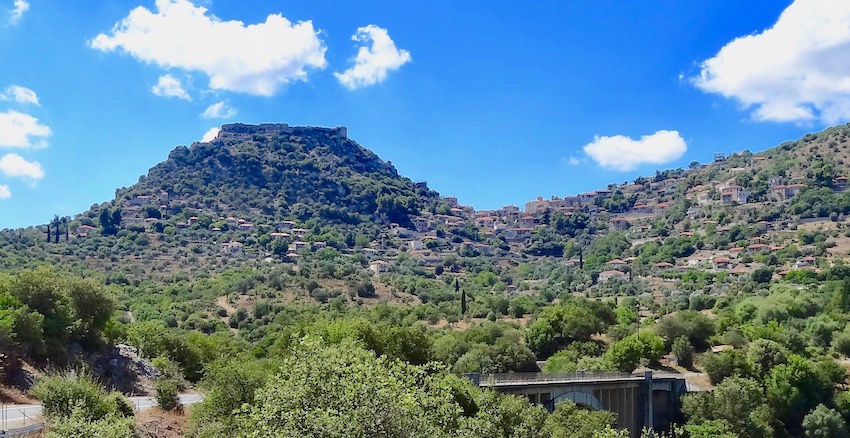 |
KarytainaIf you go far enough south you will come to the village of Karytaina on a hill on the right bank of the river Alpheios. Deserted after the founding of Megalopolis by Epaminondas in the 4th Century BC, the town made a comeback during the Frankish occupation. The Franks built the castle that sits above the town in 1245AD and due to its location was considered one of the most important in the Peloponnesos. It was sold to the Byzantine Emperor Andronicos Paleologos in the 14th Century and a hundred years later fell to the Turks, then the Venetians, and back to the Turks until the Revolution of 1821 when Theodoros Kolokotronis made it his primary base and repaired the castle walls which are still intact, though most of the interior buildings are in bad shape. The town has a couple restaurants and cafes and a handful of hotels and guesthouses. Below the town is the Frankish Bridge, right underneath the modern bridge, which crosses the river. The sign says Byzantine Bridge so the existing structure may be a mix. The bridge, which would be the pride of any town or city in the world, being at least 500 years old, has seen better days. Both bridges are used by extreme sports climbers and the wooden surface of the old bridge takes some courage to walk across, especially since there is a barrier to discourage you, if not exactly keep you from doing it. |
|
|
Vytina15 km northeast of Dimitsana and 24 km northwest of Tripoli is the traditional mountain village of Vytina on the slopes of Mount Menalon, or should I say ski slopes? This is one of the most well known winter resort areas in Greece, though it is of course unknown to even the most avid skiers of the rest of the world. That is not necessarily a bad thing. Though the area would love to welcome people from all countries, at present their website for promoting travel is only in Greek. That should make some of you reading this even more interested. This is one of those towns that the Greeks save for themselves, like some of their best wines. With loads of restaurants, tavernas and cafes and lots of places to stay, a few miles from the Mainalon Ski Center and just an hour and a half from Athens if you have not been here yet you will probably wonder why not? If you don't ski this may be the perfect place to learn. Skis and other equipment are available to rent and with most Athenians jamming the slopes of Mount Parnassus and the restaurants of Arachova you may find you have the place pretty much to yourself if you avoid Sundays and holidays. It is great for families. If there is no snow, like if it is summer, visit the Vytina Grove, a forest and botanical garden on the edge of town. Nice for walking, running, bike riding, picnics or just taking a good book to enjoy nature and escape the summer heat. Also take a walk on Vytina's Love Road, a romantic stretch of tree shaded pavement best viewed in autumn when the leaves are changing. Over Christmas the town is beautifully lit up and festive. |
|
|
MegalopolisThe center of the Arkadian League of 370 BC, the fortified city of Megalopolis was built as a defense against Sparta which was at the time in a slightly weakened state but still dangerous. By allying with Thebes, who sent an enormous army, the Arkadians attacked Sparta and freed the Helots of Messinia, thus creating more problems for the Spartans. Enough so that the Arkadians of Megalopolis were left alone to become a force in the Peloponnesos until it was destroyed by the Spartans in 222 BC. The city was later rebuilt and repopulated by the Romans but eventually abandoned. The remains of the ancient city are about a mile north of the modern town of the same name and have been excavated by the British School of Archaeology and include the foundations of the Temple of Zeus Soter, some buildings from the agora, a theater, one of the largest with seating for over 20,000, used for performances and for meetings of the representatives of the Arcadian league, and various other structures including some from the Roman period. Many of the findings are in the Archaeological Museum in the modern town. The archaeological site is located by the Alfios River in the shadow of the giant power plant that looks like Chernoble or 3-Mile Island. Don't worry. It is a lignite burning plant and probably won't be around for much longer. In the meantime it makes a great backdrop for photos of the ancient ruins and with few people visiting them you can take some pretty apocalyptic shots when the light is right. |
|
|
Tegea(Alea)Just south of Tripolis on the old road to Sparti is the town of Tegea, formerly the primary town of the region known as Tegeatis. Founded by Tegeas, it was one of the most important cities of ancient Arcadia and the seat of the last mythical Arcadian kings. Mentioned in Homer as one of the towns that sent ships to Troy, its king Echemus is said to have slain Hyllus, the son of Heracles. The Temple of Athena Alea was one of the most important shrines and originally built in Mycenean times by King Aleus. The sons of King Aleus, Amphidamas and Cepheus, and his grandson Ancaeus were Argonauts and traveled with Jason on his search for the Golden Fleece. His daughter Auge, a virgin priestess at the Temple of Athina Alea, had a baby with Heracles. His grandson Ancaeus was killed by the Calydonian Boar. Tegea sent soldiers to fight the Persians and was on the side of Sparta in the Peloponnesian War, changing sides after the Battle of Leuctra and joining the Thebans and later the Achaean League. According to Pausanias in 31 BC the Roman Emperor Augustus removed the ivory statue of Athina from the temple, and took it to Rome to decorate his new market along with the teeth of the Calydonian Boar. The town was conquered or occupied by a succession of invaders and during the Frankish period it was the capital of the Morea (Peloponnesos) and known as Nykili. In 1296 it became part of the Byzantine empire and shortly thereafter was destroyed because it was considered indefensible with many of its inhabitants moving to The Mani. The ruins of the Temple of Athina Alea are from the 4th Century Doric temple built by the famous architect Scopas of Paros, after a fire had destroyed the first temple. It was one of the most beautiful marble temples in Greece, and one of the most sacred places in Arkadia. What you see now is what was left after it was destroyed in an earthquake in the 6th Century AD. A few blocks away in the center of the modern town of Alea is the Archaeological Museum of Tegea one of the best museums in the Peloponnesos, with exhibits well laid out and lots of information in the form of text and audio/video interactive screens, as well as some rare finds. |
|
|
Rivers of ArkadiaThere are several rivers which begin, end or run through Arkadia. Some of these rivers are popular in the summer for their walking trails. (The ancient highway linking Patras and Kalamata ran along the Alfeios river for most of its length). In the rainy season when the rivers are full kayaking, rafting and fishing are popular activities. The Alfeiós is the longest river in the Peloponnese, about 110 kilometres (68 miles) long, flowing through Arcadia and Ilias. Its source is near the village Dorizas, about halfway between Tripoli and Megalopoli and flows southwest toward Megalopolis, where it has been diverted around open pit lignite mines. At Thoknia it meets the Elissonas tributary, and continues north towards Karytaina. My Peloponnesos guru Peter Katsambis says "Next time you plan on visiting Olympia you might want to make a quick stop at the Alfeios river dam to stretch your legs and take a few photos of the longest river in the Peloponnese." Below Karytaina the Lousios flows into the Alfeios, and the Alfeios continues northwest, passing north of Andritsaina. Near Tripotamia the rivers Ladon and Erymanthos flow into the Alfeios which then flows west past Olympia and empties into the Ionian Sea south of Pyrgos. The Lepidas River begins with an 80 foot waterfall that empties into the Lepidas Gorge which is located southwest of Astros. There is a parking area close to the falls. The Vrasiatis River starts in the mountains of central Arkadia and empties at Paralia Ag Andrea just south of the Mostou wetlands. In Greek mythology, the Peneus and Alpheus were two rivers re-routed by Heracles in his fifth labour in order to clean the filth from the Augean Stables in a single day, a task which had been presumed to be impossible. In the Aeneid, Virgil describes the Alpheus as flowing under the sea to resurface at Ortygia on Sicily, or so goes the story. (Thank you Wikipedia. Please donate. I do.) |
Helpful Arkadia Tips |
|
|
|
What does one bring home from a trip to Tripolis? Nothing. Tipota. See why |
| Activities in Arkadia There are all sorts of activities and guided tours in Arkadia from rock and mountain climbing and hiking to white water rafting and food and wine tours and workshops. See Activities in Arkadia |
Hotels in Arkadia |
|
|
|
You can find hotels, rooms, villas and holiday homes all over Arkadia by using my Arkadia Hotel Search and the very useful maps. For my choices of the best hotels, apartments, villas, and holiday homes in the Peloponnesos see my Hotels of Greece Peloponnesos Page If you are looking for a hotel in Tripolis try the Mainalon Resort which is a very popular and surprisingly good hotel right where you want to be, in the center of town within easy walking distance of everything. The Vytina Mountain View is on the road between Vytina and Ostrakina snow centers, on one of the most beautiful mountain sites. Nearby in Vytina is the Kentrikon Hotel and the Lagada Resort, all near the Lousios river and Ladonas lake and the unique stone bridges and buildings of the area. Housed in a 19th-century mansion in Leonidio village, Archontiko Chioti features an outdoor pool with decked terrace, indoor hot tub and hammam. If you want to be closer to the sea Byzantinon Hotel offers beautiful traditional rooms with Myrtoan Sea views in Poulithra. The Hotel Blue Sea is a clean and cozy 2 story hotel right on the beach in Tyros. Galaxy Rooms right in the center of Paralia Astros a 2 minute walk from the beach and the cafes and restaurants features its own restaurant and free WiFi. Located in the mountain village of Dimitsana, Enastron Guest House offers stone-built accommodations with fireplace and a balcony with scenic village views. Located in Stemnitsa, Kanto's Guest House features a garden, terrace and free WiFi throughout the property. The guest house has family rooms. |
Hiking in Arkadia
For more information see Hiking in Arkadia |
|
More Helpful Info |
|
Join Matt Barrett's Greece Travel Guides Group on Facebook for comments, photos and other fun stuff. If you enjoy this website please share it with your friends on Facebook or whatever social media you are currently addicted to. If you are appreciative of all the free information you get on my web-sites you can send a donation through Paypal or you can use Venmo |
|
Helpful Sites: Swift Car Rentals, George's Taxi Tours, Hotels, Athens Survival Guide, Travel Agents, Mainland Guides, Archaeology Sites Thank you to Wendy and Nigel Copage and Peter Katsambis for photos, information and inspiration. |
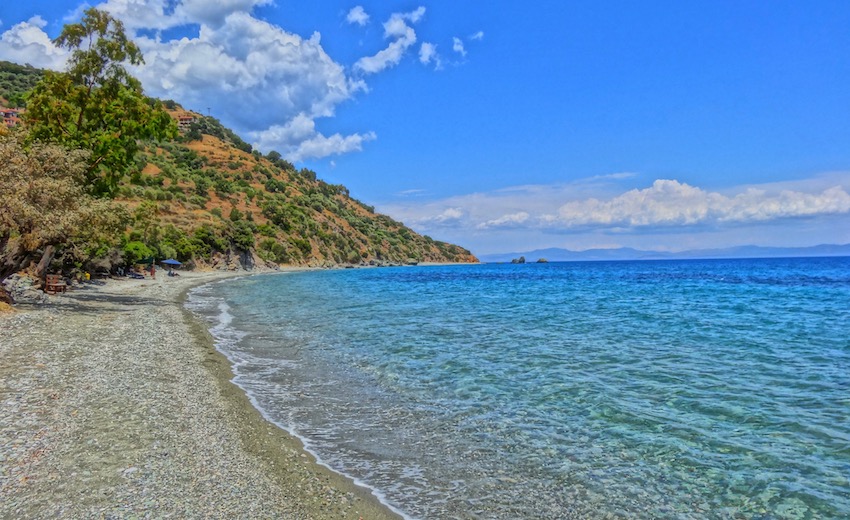
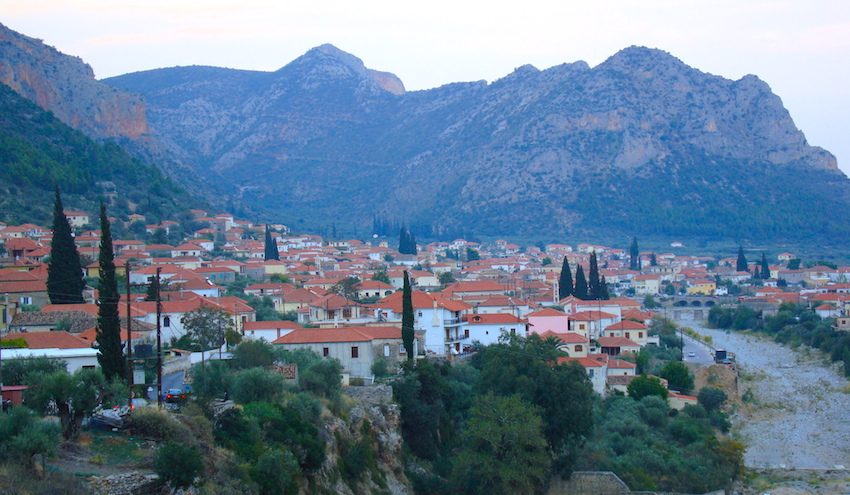
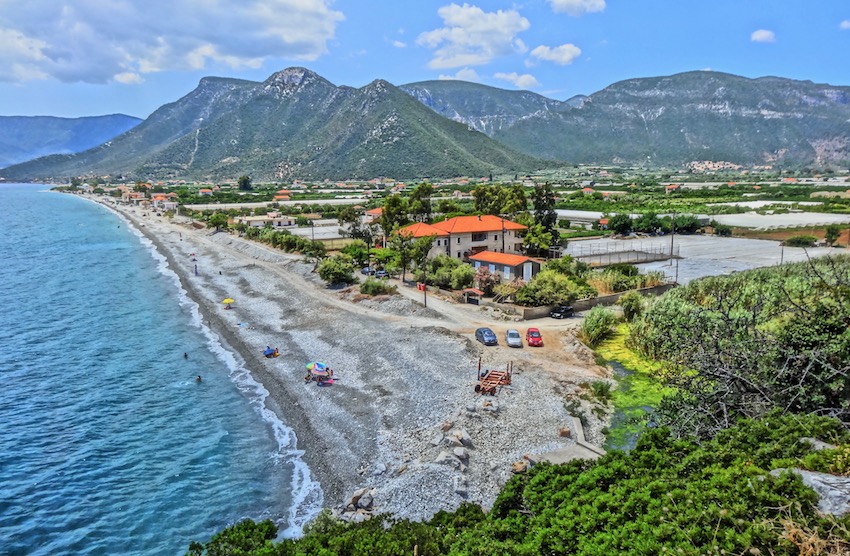
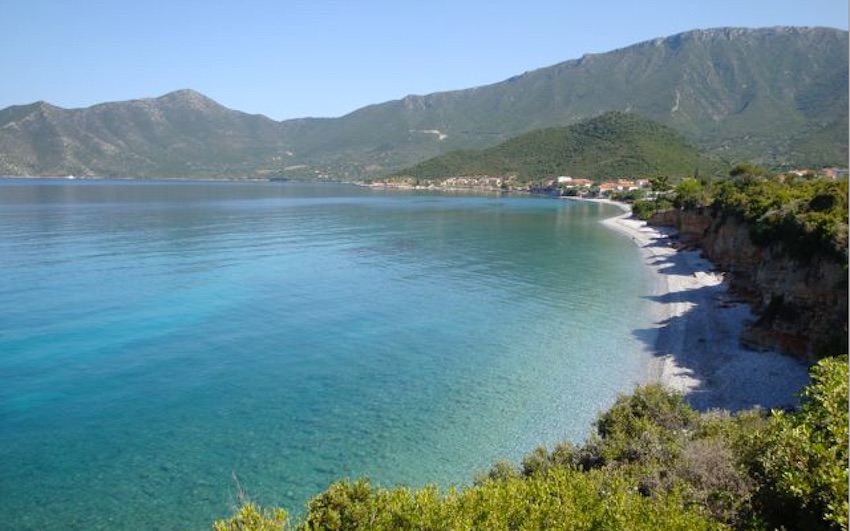
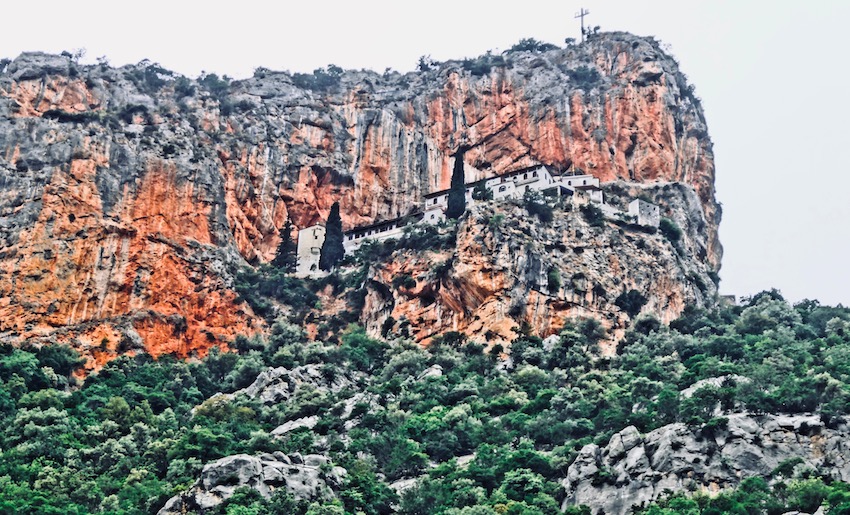
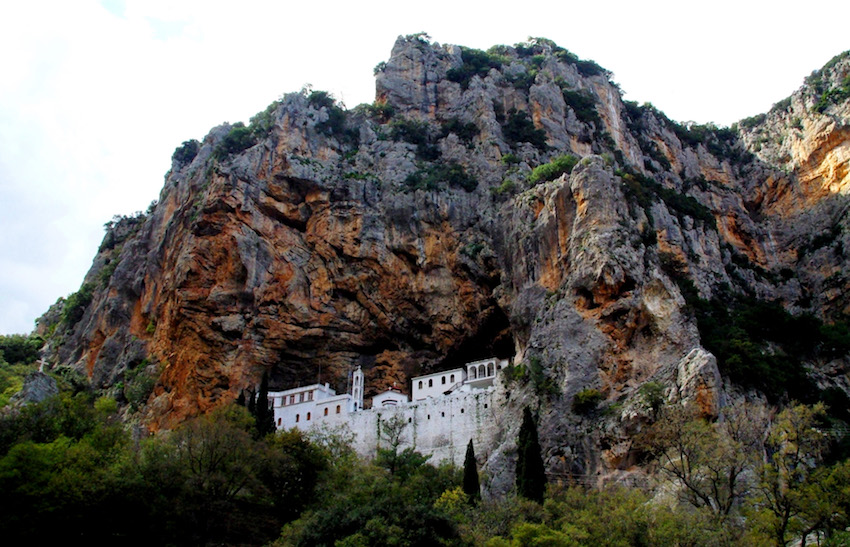
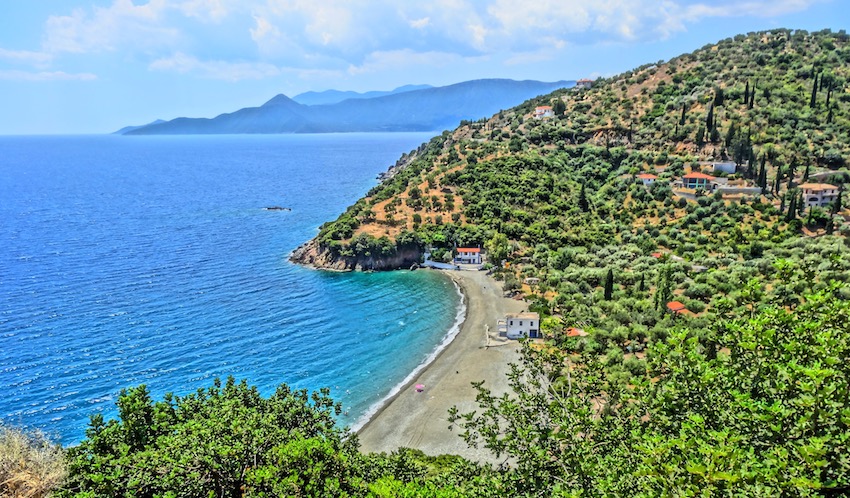
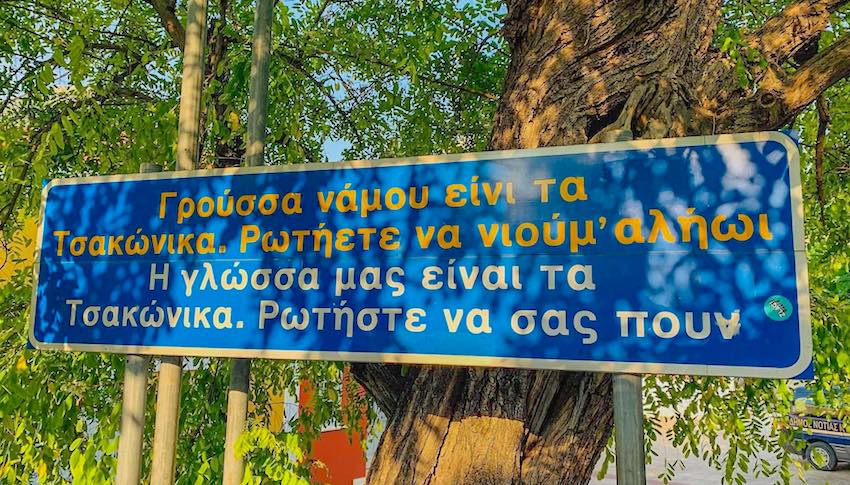
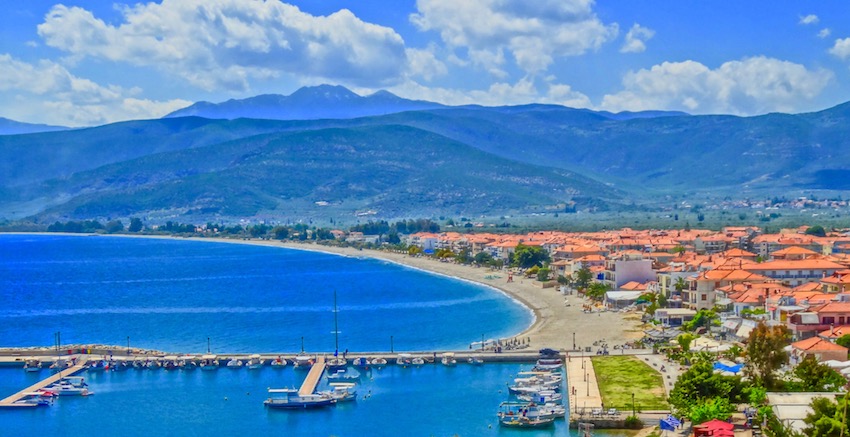
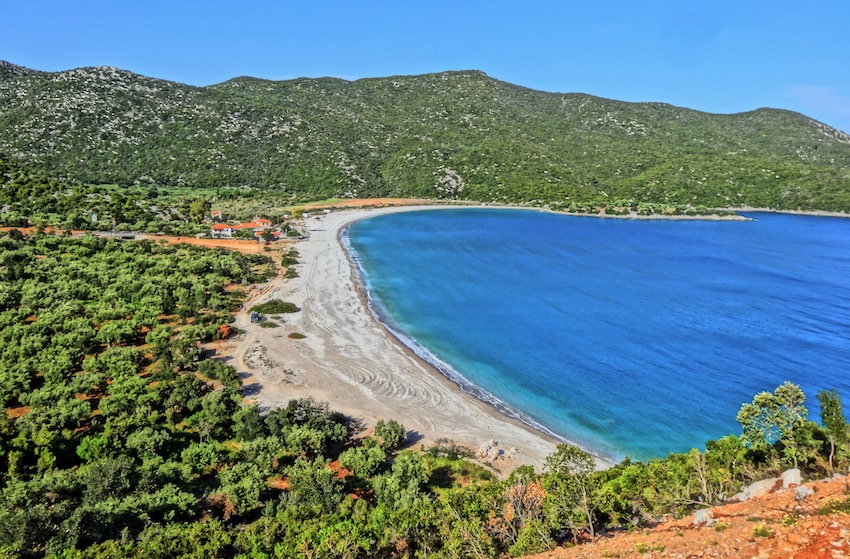
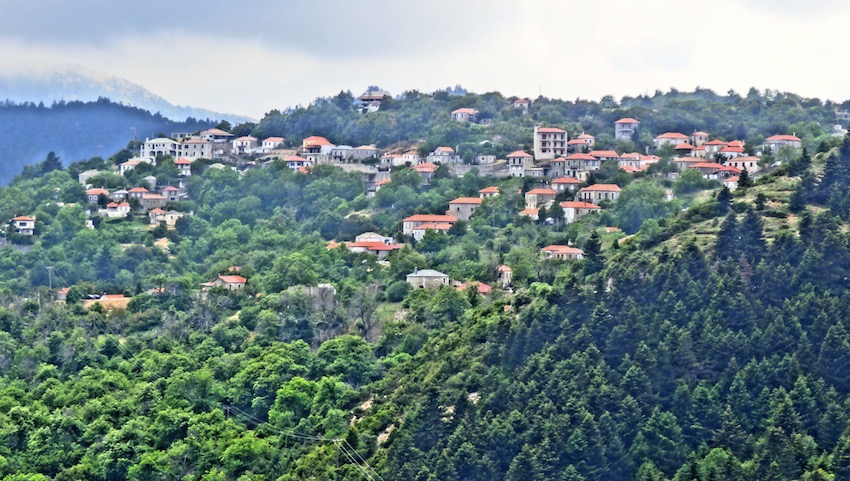
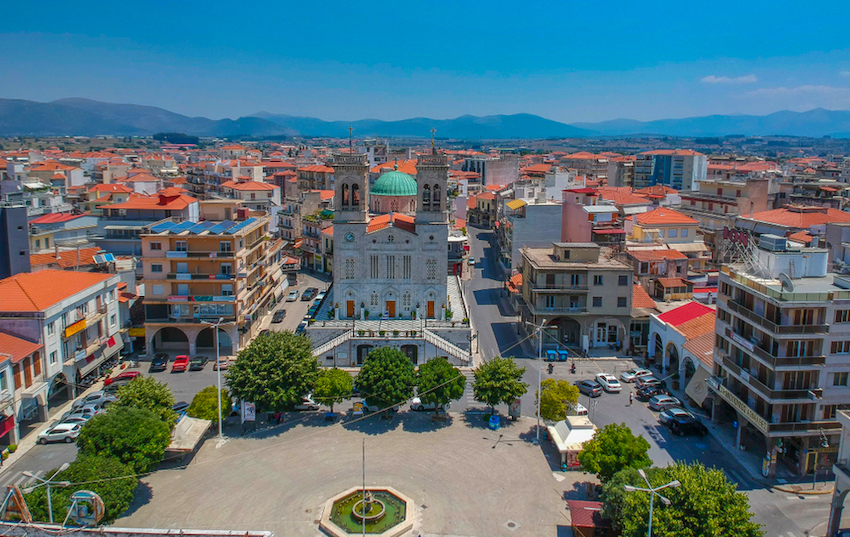
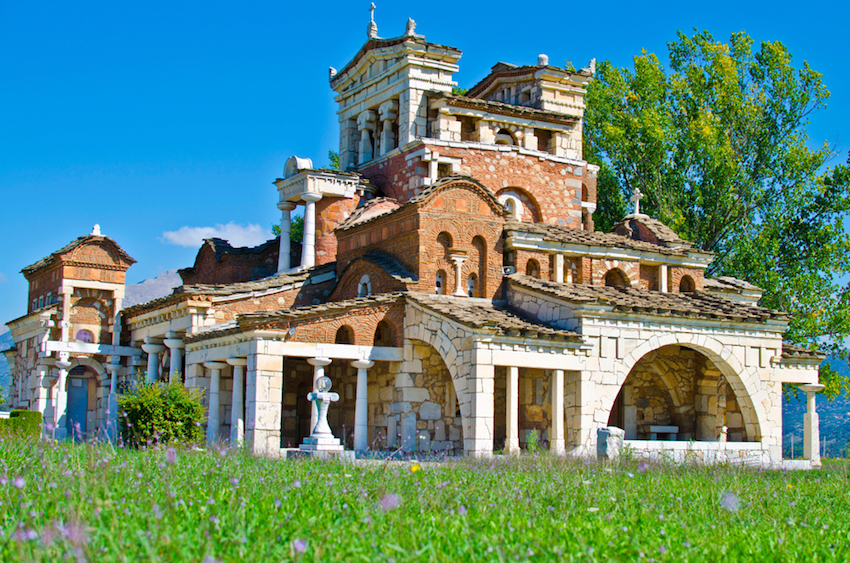
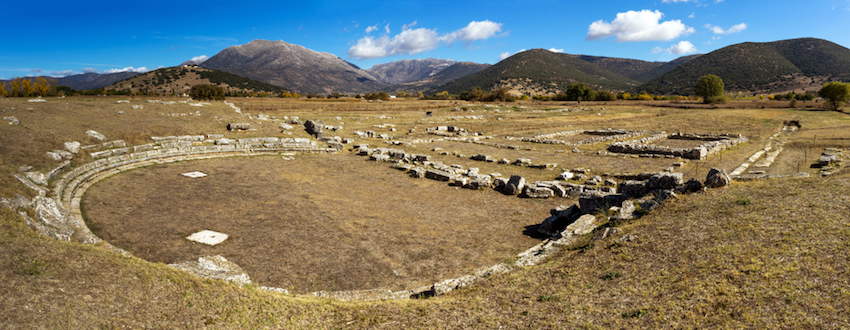
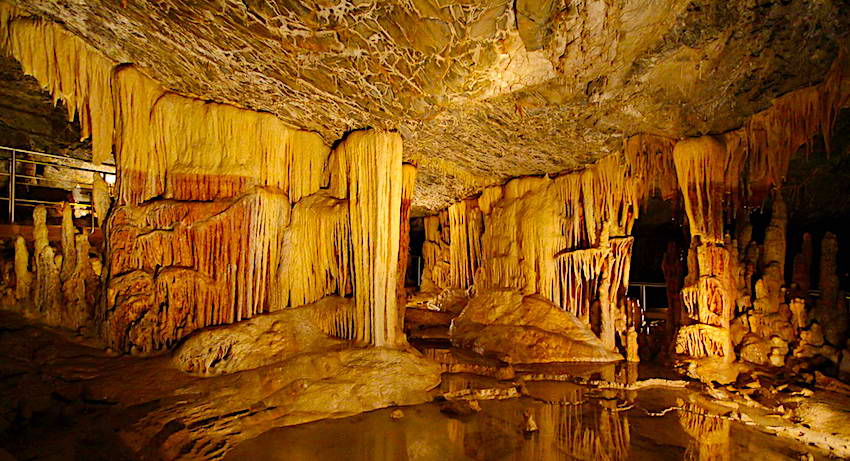
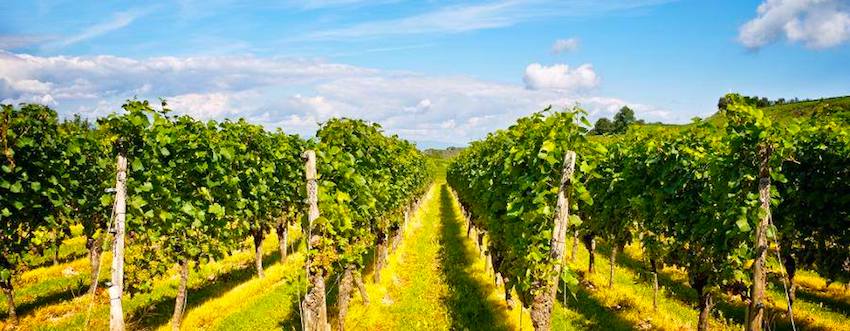
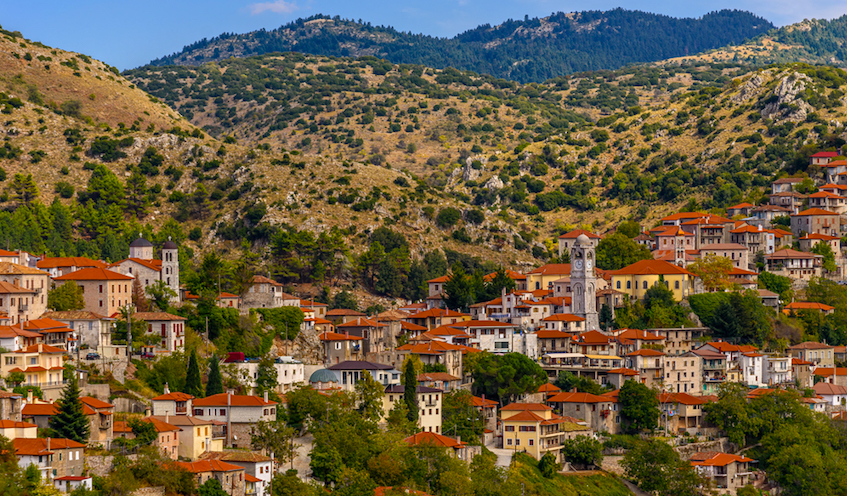
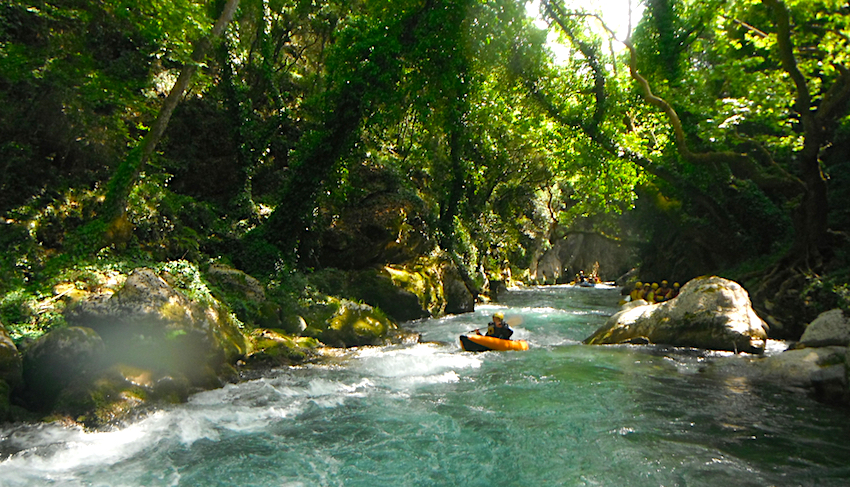
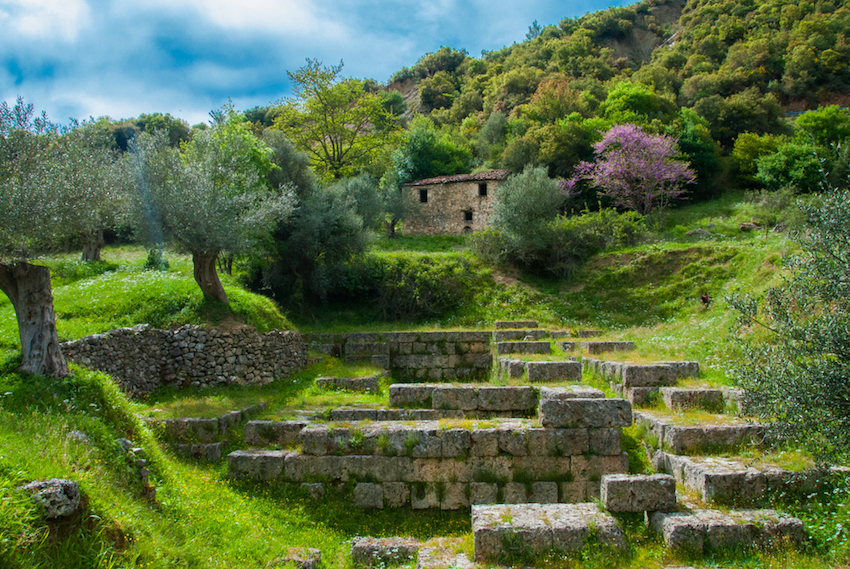
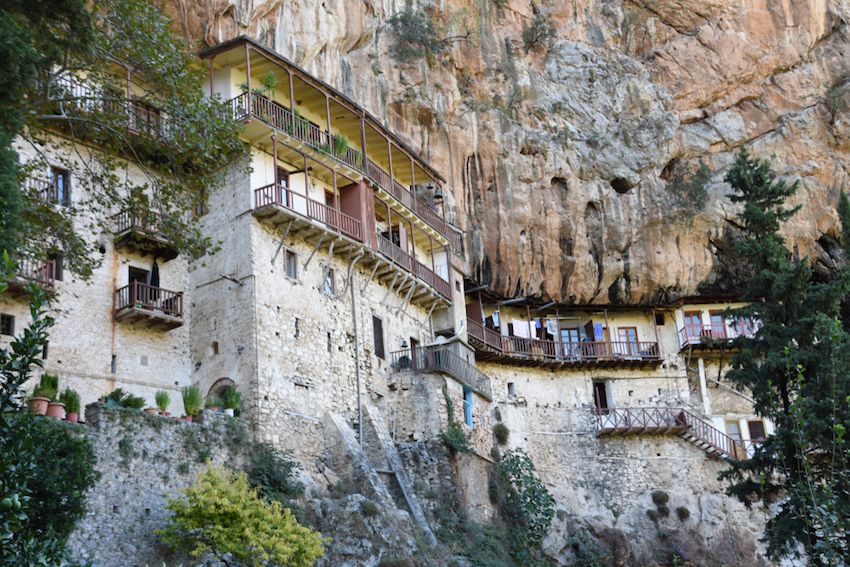
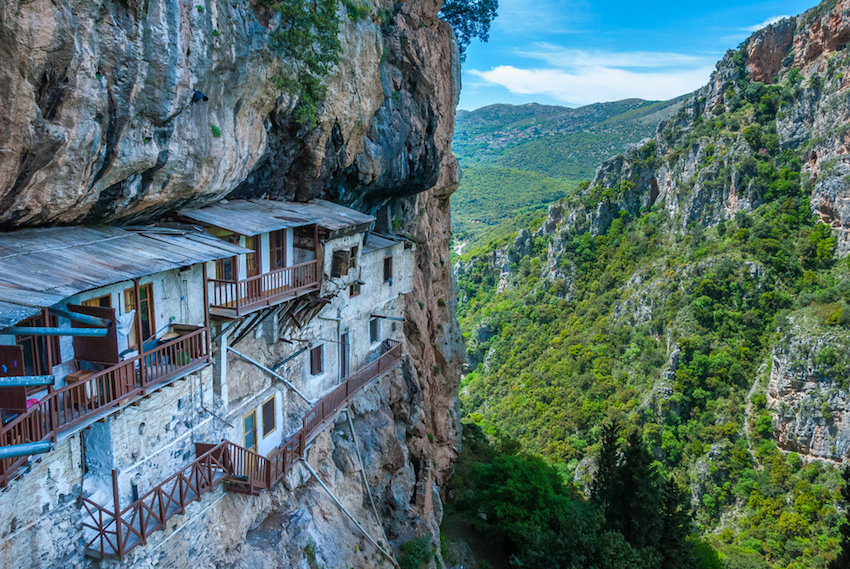
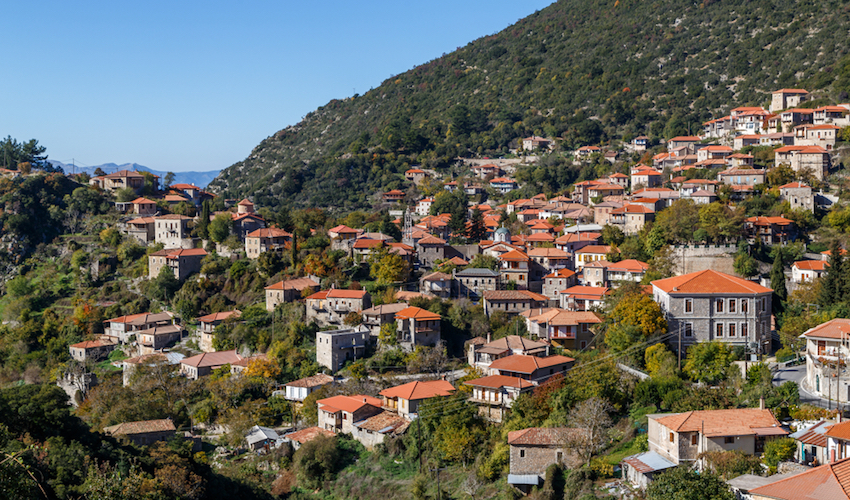
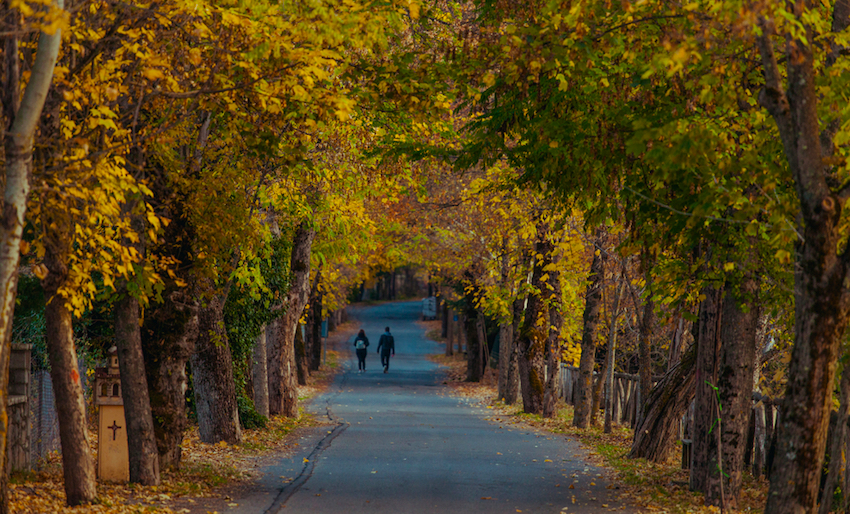
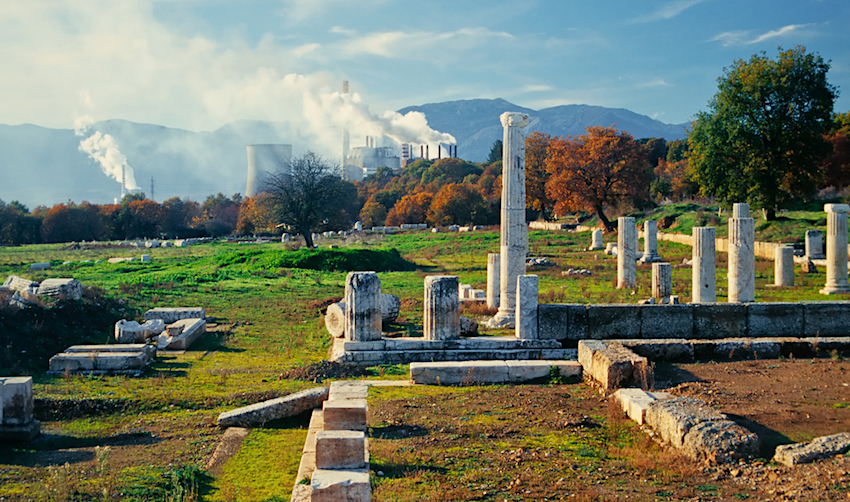
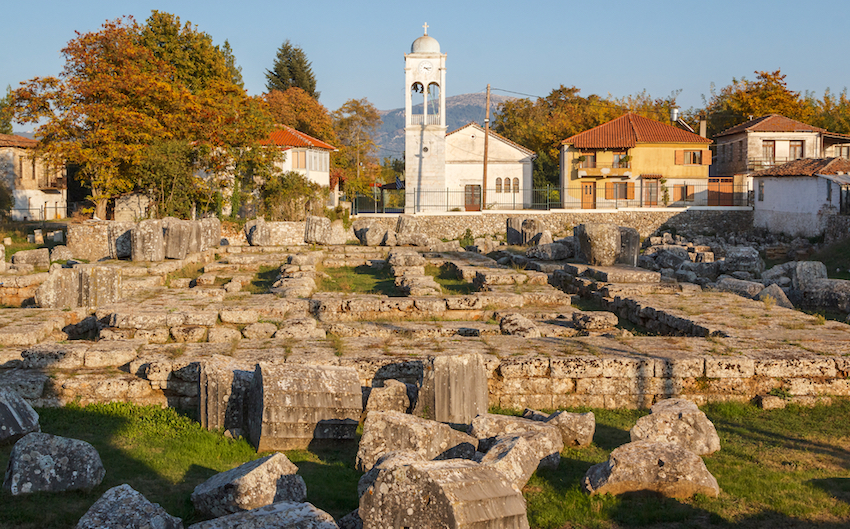
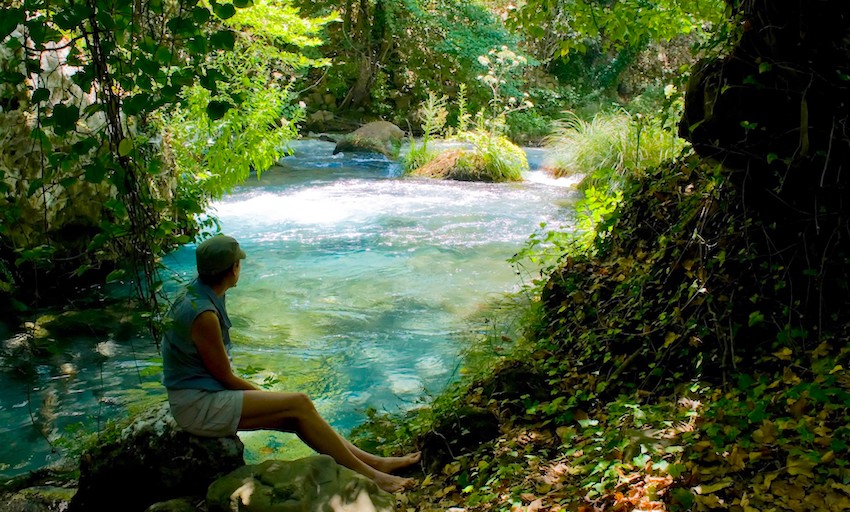
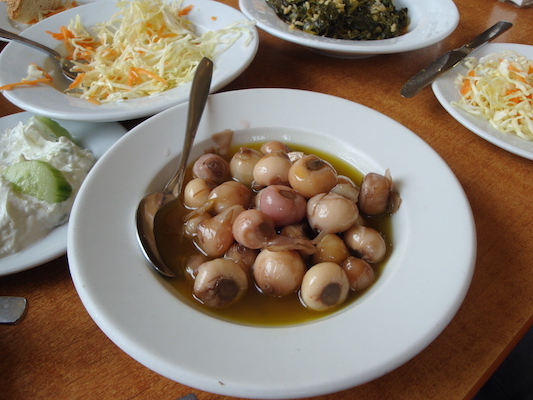 On the old highway between Sparta and Tripolis there are two important places to stop. The first is the cheese factory a few kilometers on the right before you reach Tripolis coming from Sparta. (I am writing this for people returning to Athens from the Peloponessos since not many people take cheese on a vacation with them.) You can
buy
sheep yogurt and feta and manouri, maybe the best you will find anywhere. The second stop is the Ardamis restaurant
which looks like a truck-stop from the USA but is actually one of the best Greek restaurants in the Peloponessos, certainly the best you will find on a highway. We had rabbit stifado, and volvous which are marinated tassel hyacinth bulbs. They taste awful but you have to try them and they are supposed to be good for you but I am not sure in what way. Best of all is the local wine and traditional products they sell there. Especially good is the dark red Kariatiko Regional Dry Red Wine of Lakonias which
is
sold in plastic 1.5 liter bottles for 4.60 euros each. It is the best
wine in a plastic bottle you will ever drink. Keep your eyes open for people selling fruits and vegetables on the road to Sparta, especially in early summer when it is cherry season. Though most people will take the new superhighway between Tripolis and Sparta these 2 stops make it worth taking the old road, especially if you are hungry. Unless you get stuck behind an old dump truck going 10mph in the mountainous part, belching smoke, in which case you will be pissed off that you followed my suggestion.
On the old highway between Sparta and Tripolis there are two important places to stop. The first is the cheese factory a few kilometers on the right before you reach Tripolis coming from Sparta. (I am writing this for people returning to Athens from the Peloponessos since not many people take cheese on a vacation with them.) You can
buy
sheep yogurt and feta and manouri, maybe the best you will find anywhere. The second stop is the Ardamis restaurant
which looks like a truck-stop from the USA but is actually one of the best Greek restaurants in the Peloponessos, certainly the best you will find on a highway. We had rabbit stifado, and volvous which are marinated tassel hyacinth bulbs. They taste awful but you have to try them and they are supposed to be good for you but I am not sure in what way. Best of all is the local wine and traditional products they sell there. Especially good is the dark red Kariatiko Regional Dry Red Wine of Lakonias which
is
sold in plastic 1.5 liter bottles for 4.60 euros each. It is the best
wine in a plastic bottle you will ever drink. Keep your eyes open for people selling fruits and vegetables on the road to Sparta, especially in early summer when it is cherry season. Though most people will take the new superhighway between Tripolis and Sparta these 2 stops make it worth taking the old road, especially if you are hungry. Unless you get stuck behind an old dump truck going 10mph in the mountainous part, belching smoke, in which case you will be pissed off that you followed my suggestion.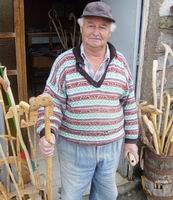 The
town of Langadia is an interesting place to visit for a couple
reasons. It is a mountain village nestled within a pine forest at
a pretty high altitude and has some amazing views. There are some
cafes and tavernas and what is called the Katastima Trofimon
right next to an excellent coffee shop that makes great espresso.
The Katastima Trofimon is run by a lovely woman by the name of Kanella
Mouroutsou (her brother owns the coffee shop next door). The store
features natural and traditional products including their home-made
pastas, honey, olive-oil, herbs from the mountains, soaps, cheeses,
vinegar, fruit preserves, grains, dried fruits, sun-dried tomatoes
and lots of other products. Langada is on the road from Olympia
to Tripolis so if you are passing through it is a nice place to
stop and take a break. Also on the road out of town is a small shop
owned by a little old man by the name of Athanasios Grigoropoulos
who makes hand carved walking sticks and canes of a wide and interesting
variety including some made of goat horns. Athanasios is an engaging
and interesting guy who has mountains of letters and cards he gets
from well-wishers who have stopped in to his shop. The shop itself
is in a precarious location near a bend in the road so be careful
while crossing and shopping. I am not sure exactly where it is because the only reason we were there was because we were totally lost.
The
town of Langadia is an interesting place to visit for a couple
reasons. It is a mountain village nestled within a pine forest at
a pretty high altitude and has some amazing views. There are some
cafes and tavernas and what is called the Katastima Trofimon
right next to an excellent coffee shop that makes great espresso.
The Katastima Trofimon is run by a lovely woman by the name of Kanella
Mouroutsou (her brother owns the coffee shop next door). The store
features natural and traditional products including their home-made
pastas, honey, olive-oil, herbs from the mountains, soaps, cheeses,
vinegar, fruit preserves, grains, dried fruits, sun-dried tomatoes
and lots of other products. Langada is on the road from Olympia
to Tripolis so if you are passing through it is a nice place to
stop and take a break. Also on the road out of town is a small shop
owned by a little old man by the name of Athanasios Grigoropoulos
who makes hand carved walking sticks and canes of a wide and interesting
variety including some made of goat horns. Athanasios is an engaging
and interesting guy who has mountains of letters and cards he gets
from well-wishers who have stopped in to his shop. The shop itself
is in a precarious location near a bend in the road so be careful
while crossing and shopping. I am not sure exactly where it is because the only reason we were there was because we were totally lost. 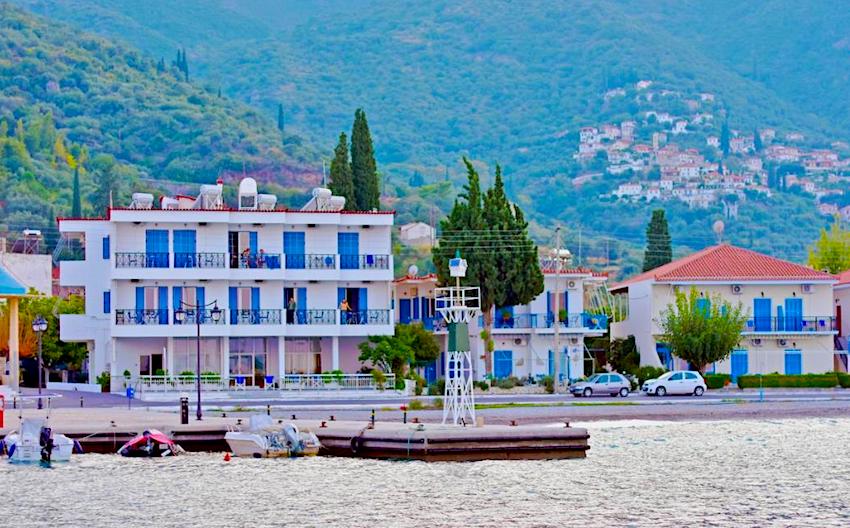
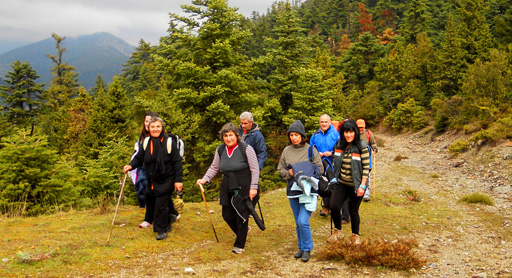 Greece on Foot is a small group of walkers who love Arcadia with a passion. This is a living community of farmers working as they have for centuries; picking olives and carobs, tending their animals and walking the mountains with their donkeys and mules. Their programs combined planning with flexibility and included days in the mountains
and time by the sea. Their experienced walk leader, Wendy Copage, has been a walker all her life starting with the Lake District and Scotland, then Greece to which she moved in 1989. Wendy has a detailed knowledge of the local fauna and flora and knows where to find the endemic plants, and where to pick the best herbs in season: oregano, thyme, rosemary, mountain tea and greens. She has had the best teachers... the local women who learnt from
their grandmothers! Wendy's fluent Greek allowed her to learn all the local history and special secrets to share with her walkers. Wendy retired recently but she has left behind a group of passionate walkers and hikers who have made Arkadia a popular area for people who love nature.
Greece on Foot is a small group of walkers who love Arcadia with a passion. This is a living community of farmers working as they have for centuries; picking olives and carobs, tending their animals and walking the mountains with their donkeys and mules. Their programs combined planning with flexibility and included days in the mountains
and time by the sea. Their experienced walk leader, Wendy Copage, has been a walker all her life starting with the Lake District and Scotland, then Greece to which she moved in 1989. Wendy has a detailed knowledge of the local fauna and flora and knows where to find the endemic plants, and where to pick the best herbs in season: oregano, thyme, rosemary, mountain tea and greens. She has had the best teachers... the local women who learnt from
their grandmothers! Wendy's fluent Greek allowed her to learn all the local history and special secrets to share with her walkers. Wendy retired recently but she has left behind a group of passionate walkers and hikers who have made Arkadia a popular area for people who love nature.

